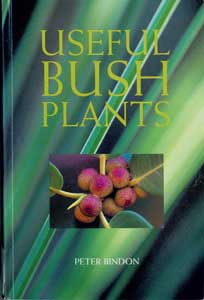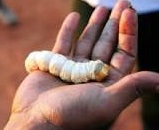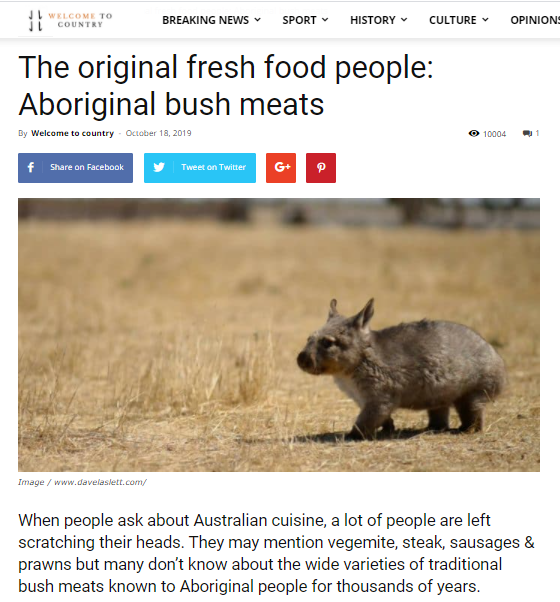Indigenous Australian Bushfoods
When people ask about Australian cuisine, a lot of people are left scratching their heads. They may mention vegemite, steak, sausages & prawns but many don’t know about the wide varieties of traditional bush meats known to Aboriginal people for thousands of years.
In this article we take a look at the huge range of bush meats… basically any living animal (land, sky or sea) that our people once ate before or still eat today. This is the first of our healthy living series that highlights the important role diets play towards our health as Indigenous people.
Source: Welcome to Country - https://www.welcometocountry.org/the-original-fresh-food-people-aboriginal-bush-meats/
Click HERE or the image above to view the resource in a new window
A bibliography of bush-foods and Aboriginal uses, prepared by the staff at the Australian National Botanic Gardens Library.
Last updated: November 2011
BUSH FOOD
 Bindon, Peter 1996, Useful bush plants. Western Australian Museum, Perth. 286 pp.
Bindon, Peter 1996, Useful bush plants. Western Australian Museum, Perth. 286 pp.
On plants from Western Australia.
Bonney, Neville 2006, Adnyamathanha and beyond: useful plants of an ancient land. Australian Plants Society, South Australian Region, Unley, S.A. 99 pp.
Indigenous plant use in the Flinders Ranges of South Australia.
Bonney, Neville 2010, Knowing, growing, eating … edible wild native plants for southern Australia. N. Bonney, Tantanoola, S.A. 103 pp.
An illustrated guide with descriptions of the plants and where they occur, information on cultivation and some recipes.
Brand Miller, Janette, James, Keith W & Maggiore, Patricia MA 1993, Tables of composition of Australian Aboriginal foods. Aboriginal Studies Press, Canberra. 256 pp.
Data for nutritional content, dietary fibre, vitamins and minerals.
Cherikoff, Vic & Isaacs, Jennifer 1991, The bush food handbook: how to gather, grow, process & cook Australian wild foods. Ti Tree Press, Balmain, N.S.W. 208 pp.
Also reprinted in 2000 by Cherikoff Pty Ltd., Boronia Park, NSW.
Prior to European settlement, Australia’s indigenous people were primarily nomadic, moving from place to place to hunt and gather food. They had a deep understanding of the land, the seasons and the food sources. It is now recognised that they exerted considerable control over their environment, using methods including fire, taboos, grain harvesting and storage, fish and eel traps and some planting to ensure continuity of food supply.
Aboriginal people may have arrived on the Australian continent as early as 60,000 years ago. At that time, many species of megafauna still existed. There is some evidence that the arrival of humans caused or contributed to their extinction. Remains of these animals have been found close to aboriginal artifacts. Traces of blood and hair on the tools found match the megafauna species. The practice of “firestick farming” – the burning of the undergrowth – may also have contributed to the extinctions by reducing the available food for the large herbivores.
In this video you will be taught how to make Sabee Curry Chicken
